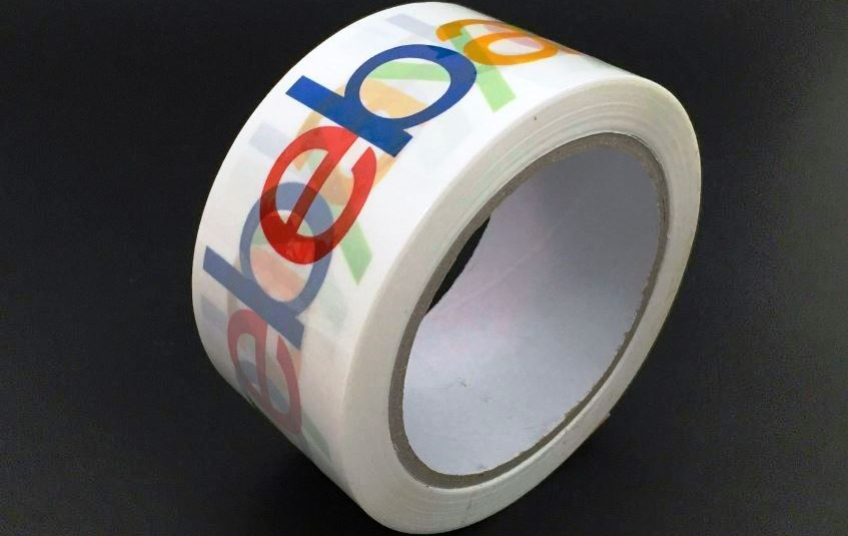Packing tape is used throughout the packaging industry and may often be overlooked as a simple necessity to secure a corrugated box. Tape can be used to advertise; companies like Amazon have used their packing tape to promote upcoming events, sales periods, etc. Companies like Stik2it.com offer custom packing tape services for shipping companies or vendors looking to advertise a product or possibly make an artistic impression on their packages for the consumer [1]. Amazon also utilizes biodegradable packing tape to be easily recycled or composted, although the plastic shipping label is not biodegradable [2].
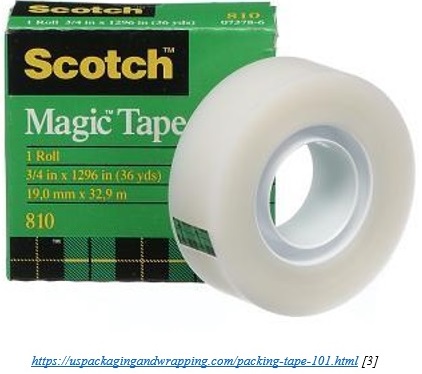
Scotch brand tape by 3M is one of the largest brands of packing tape and was voted the #1 top pick by consumers for packaging in 2021 [4][11]. Scotch tape was developed in 1925 by a 3M engineer named Richard Drew—the first designed Scotch tape as a two-inch wide tan tape with a pressure-sensitive backing. The intention was to provide auto painters with tape to help them cover items not to be painted. When Drew tested the tape to see how much more adhesive was needed, a painter became frustrated and told Drew to “Take this tape back to those Scotch bosses of yours and tell them to put more adhesive on it!” The Scotch name was applied to the entire line of 3M tapes afterward. The first tape that Drew invented was composed of oil, resins, and rubber. When the adhesive is applied to its backing, it must be liquid to spread. These days, chemists use a chemical or physical process to transform the resin into a bonding agent. The method used depends on the desired strength of the bonding agent.
The next crucial Scotch invention was in 1932, when the first handheld tape dispenser was invented. It was composed of cast iron and weighed almost 7 lbs. After that, in 1937, the “snail,” Scotch's iconic tape dispenser, was created. Since the invention of the handheld Scotch tape dispenser, Scotch tape has become an iconic part of American culture. Often it is used as a general term for people desiring transparent adhesive tape. U.S. Packaging & Wrapping is proud to offer Scotch Brand tape along with Tartan Brand tape, both 3M adhesive tapes” [3][9].
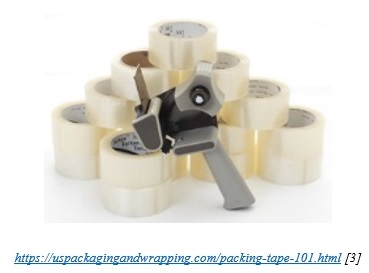
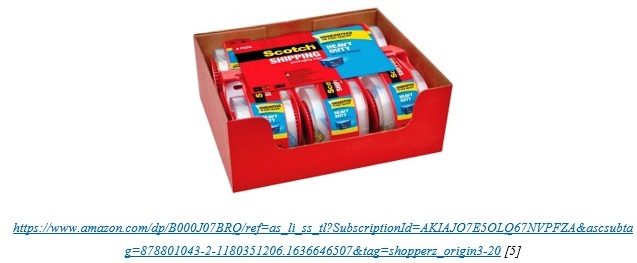
There are a variety of different products offered from 3M to accommodate various package weights. For instance, if a package weighs less than 15 lbs, Scotch number 371 is recommended. If a package weighs 15-40 lbs, then Scotch number 372 is recommended, and if a package weighs over 40 lbs, Scotch number 375 is recommended [3][7]. Packing tape can also list important safety information, such as “Fragile” or tamper-evident tape that shows if the package has been opened [6][8].

3M also makes strapping tape, which is recommended for strapping, palletizing, bundling, reinforcing, securing, or general-purpose applications. Strapping tape is used for larger, heavier jobs that require extra strength. Strapping tape is also reinforced with various materials such as plastic, steel, woven cord, and nylon [7].
Custom packing tape can be made to accommodate a wide variety of needs, such as warning labels, product or brand advertising, product information, upcoming events, and sales, etc. Tape can be customized for graphics and visual appeal by changing materials or coatings. When it comes to aesthetics, paper tapes are kraft color or white. They are ideal for brands that have an earthy tone or monochromatic schemes. Poly tapes, on the other hand, are clear and glossy, making them suitable for brands with bold and popping graphics. [8].
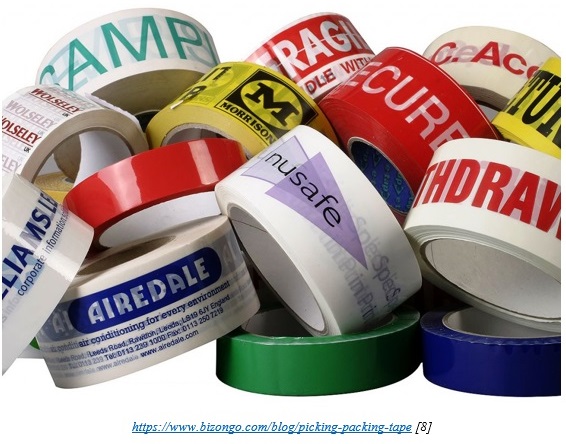
Before packing tape was invented, other means were necessary in order to secure items. In 4000 B.C., earthenware pots were mended with an adhesive substance made from the sap of trees. The earliest written records of adhesives dating back to 2000 B.C. describe simple instructions for preparing fish glue. Around 1500-1000 B.C. Egyptian hieroglyphics suggest they use glue made with animal-derived adhesives for bonding and laminating. The Romans and Greeks developed adhesives from various materials, including egg whites, blood, bones, hide, milk, and vegetable matter. In 618-906 B.C., China used fish, ox, and stag horn material for adhesives. The best was made from the bladder of the sturgeon and called isinglass. The first patent for an adhesive was issued in 1750 in Britain for a fish-based glue and led to the opening of the first commercial glue factory in Holland [9].
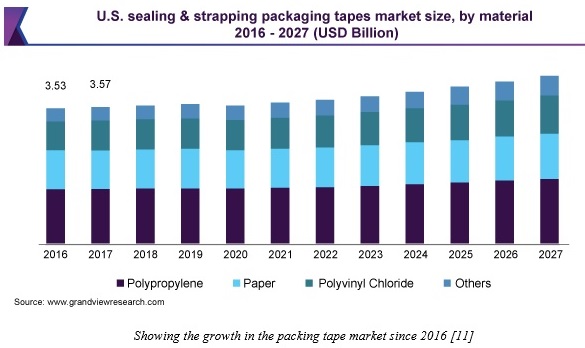
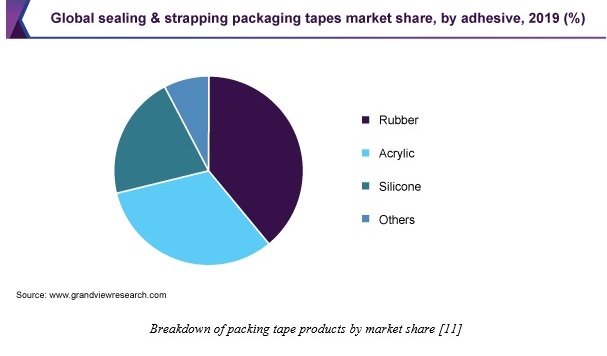
Packaging and e-commerce are growing in complexity and market value, creating opportunities for new products and innovative product designs and applications. The development of newer products with additional features such as high aging and UV resistance coupled with suitability for manual and mechanical processing is expected to positively influence the demand for polypropylene tapes in the near future [11].
The United States is one of the fastest-growing packaging markets in North America. Large packaging companies’ presence helps drive investments for innovation and R&D activities in the country. Major consumer packaging trends point toward the demographics and emphasize the demand for convenience packaging [12]. If packaging remains a growing field, packing tape will be necessary and fuel future ideas and innovations.
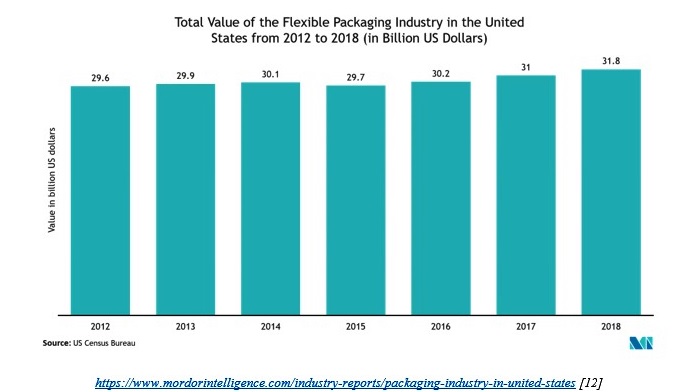
References:
https://www.stik2it.com/blog/how-to-use-packing-tape-in-product-distribution-to-boost-brand-awareness/
https://findanyanswer.com/what-kind-of-tape-does-amazon-use
https://uspackagingandwrapping.com/packing-tape-101.html
https://www.bestreviews.guide/packing-tapes
https://www.amazon.com/dp/B000J07BRQ/ref=as_li_ss_tl?SubscriptionId=AKIAJO7E5OLQ67NVPFZA&ascsubtag=878801043-2-1180351206.1636646507&tag=shopperz_origin3-20
https://www.uline.com/Grp_224/Security-Tape
https://www.bhid.com/whats-the-difference-between-packing-and-strapping-tape
https://www.bizongo.com/blog/picking-packing-tape
https://www.can-dotape.com/adhesive-tape-consultant/adhesive-tape-history/
https://www.rocketindustrial.com/ideas/resource-center/tape-recommendation-guide.html
https://www.grandviewresearch.com/industry-analysis/sealing-strapping-packaging-tapes-market
https://www.mordorintelligence.com/industry-reports/packaging-industry-in-united-states





























